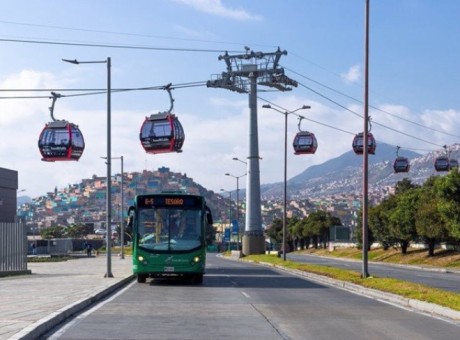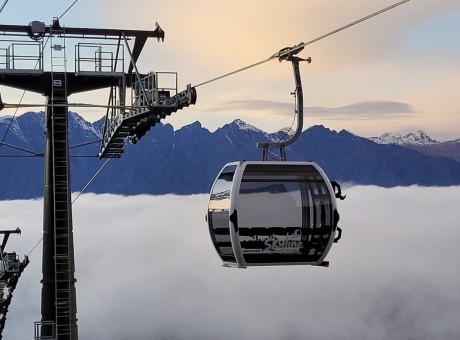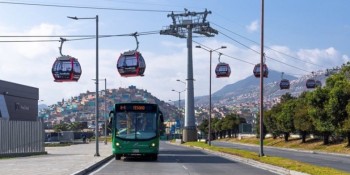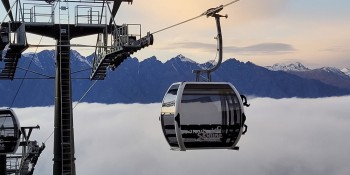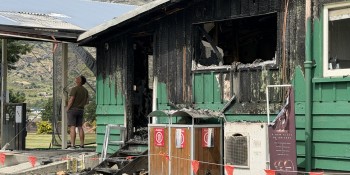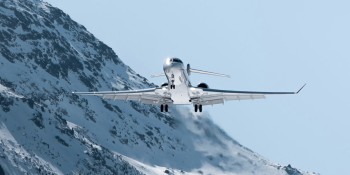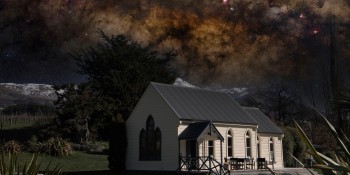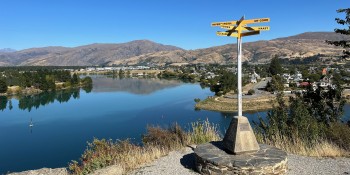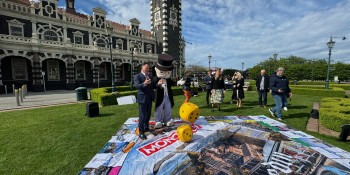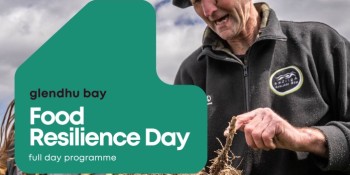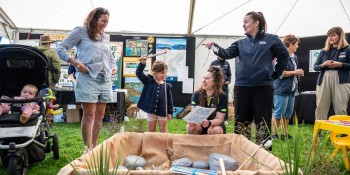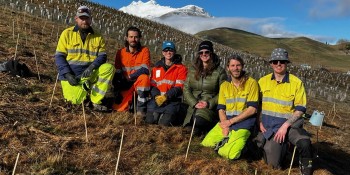Economist: Low wage tourism at heart of local productivity and infrastructure problems
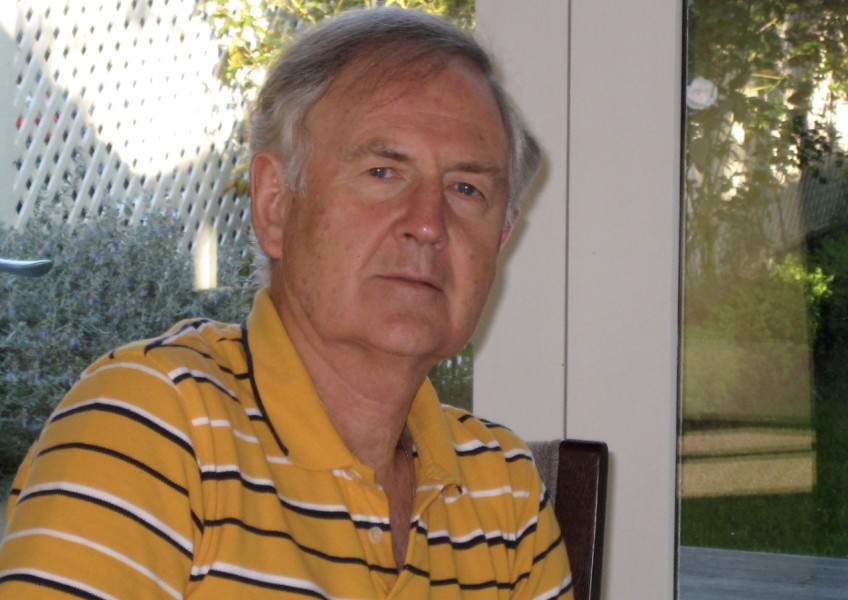
Ralph Hanan is now a Queenstown resident after many years in Washington DC as a senior World Bank Economist. He’s written for Crux in recent years about the big economic factors at play locally, highlighting how we are falling behind in terms of how our local economy is performing. One of the key factors appears to be the low wage tourism economy and how little progress has been made in diversifying away from tourism, in spite of strong statements of intent being made by our local authorities and the continued subsidising of the tourism industry by local ratepayers.
Thanks to our paid subscribers for the support that makes this type of premium content possible. Please subscribe today - free or paid.
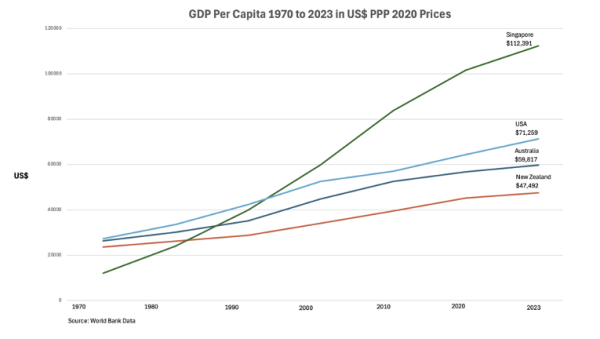
(Image Note: PPP: Purchasing Power Parity.)
If a picture is worth a thousand words, this chart (main image above) tells us a lot. The productivity of New Zealand’s labour and capital has been lagging consistently behind countries with which we like to compare ourselves.
All countries measure their economic performance with their Gross Domestic Product (GDP), which the value of final goods and services produced in a country (or region), usually over one year. It allows comparisons of living standards between and within countries. All countries aspire to increase their GDP. Our National Government sharpened its focus recently on increasing NZ’s economic growth.
Productivity is important for economic growth. Here in simple terms is an explanation of productivity.
A country or region can increase its economic growth, or GDP, in only two ways, by increasing our population or increasing our productivity, or a combination of both. Productivity means getting a bigger bang for your buck. It concerns the efficiency with which we transform our inputs of capital and labour into outputs.
In economics, productivity is increasing the value of what we produce – our value product – relative to the value of our inputs. Making smarter use of our labour and capital, through new technologies, innovation, and better management of these resources increases our productivity. The productivity of our labour is closely tied to the level of our salaries and wages.
We measure the productivity of labour by dividing our GDP by our population, or better, by the number of filled jobs or the number of hours worked. GDP per hour worked is an accepted measure to compare countries’ standards of living. To increase our standard of living we must increase our capital per worker, usually referred to as per capita. Think of capital deepening. Knowledge, as in technology and innovation, is an increasingly important form of capital.
While more workers, through immigration and natural increase, grows the total value of our output - our GDP - it does not necessarily make us better off on a per capita basis. Again, productivity is key.
New Zealand’s Productivity
Back in 1960, according to the World Bank, New Zealand’s GDP per capita was second only to the United States among all countries. By 2019 New Zealand had slipped to 19th place.
Singapore in the meantime had climbed to 7th place. Switzerland, Luxembourg, and Ireland also climbed up the ranks. Australia over the period slipped from 6th to 9th place.
The latest GDP per capita data from the Organisation of Economic Co-operation and Development (OECD), for 2023, shows NZ in 22nd place. That’s around the same as for the Czech Republic, Lithuania, and Slovenia.
Additionally, according to the OECD, the number of hours worked per person in New Zealand is more than the average of the top half of the 38 OECD countries. It follows that our GDP per hour worked is yet more discouraging.
Comparing ourselves with Australia, NZ’s GDP per capita is about 70% of Australia’s. Put the other way, Australia’s GDP per capita is about 40% higher than NZ’s.
For the last 15 years New Zealand’s growth of capital and labour inputs has been roughly equal, at about 2% per year. Recall, however, that to increase the value of our output per capita, we must increase our capital relative to our labour, our capital:labour ratio. Our economy must expand faster than our population, or faster than the number of hours worked.
Our low productivity and low growth of productivity, mean lower personal incomes, in salaries and wages, and lower tax revenues to fund Government expenditures. Many families these days need both partners to work to make ends meet.
We may reflect on the discontent of various employed groups in NZ, especially in the public sector, that have been demanding, and often striking for, higher wages. It’s not surprising that many of our best and brightest are moving to Australia. Simply put, our lackluster economy and tax revenues are not sufficient to fund the salaries and wages and provide the quality services to which we feel we are entitled as a first-world economy.
With NZ’s economic performance in mind, let’s now turn our attention to the Queenstown Lakes District. How is our local economy performing compared to New Zealand as a whole? Are we pulling our weight?
Productivity in the Queenstown Lakes District
QLDC’s 10-Year Plan (2018 to 2028) showed that the mean income in our District in 2016 was 15% below the mean for NZ as a whole - $49,780 to $57,780. The consultancy Infometrics indicated at the time that this gap was not only getting wider but our District’s GDP per capita was declining in real terms.
QLDC’s Economic Diversification Plan 2024 shows our GDP per capita gap in 2023 may have narrowed slightly, to 12% below NZ as a whole – our mean earnings per filled job was $65,916 while for New Zealand it was $74,754.
The Diversification Plan comments that our District’s lower mean earnings can be attributed to lower productivity jobs than in NZ generally. It adds that over the last 20 years productivity per filled job has averaged 10% less than the NZ average.
It is evident that for years the model of our Lakes District economy, based mainly on tourism, has not delivered a standard of living many of us living and working here would wish.
It is interesting to juxtapose the increase in our District’s GDP with the contribution made by tourism. Until 2020, according to Infometrics, tourism was contributing 30-35% of the District’s GDP. In 2021, with the onset of COVID, tourism’s contribution declined markedly, to 19%. The number of filled jobs also declined markedly. Yet the District’s GDP held up, growing in 2021 at 9.0% and only a little less than that percentage since. These figures suggest that capital intensive activities have substituted for some of our tourism, more than pulling their weight to counter tourism’s decline.
It's worth noting that QLDC’s Spatial Plan 2021 (p. 43), quoting Infometrics, says that in 2020 tourism represented 63% of jobs and 55% of the District’s GDP. Possibly a different classification of what activities are included in tourism.
Whichever way we look at it, our District’s economy remains stuck in a low-productivity churn of tourism. Most tourism is a labour-intensive, low-margin activity. As such, it generates low wages, which leads to affordability issues with our high cost of living and housing. The social fabric of our workers and families is also stressed. Moreover, it provides little opportunity to scale up by investing capital in new technology to substitute for labour (higher productivity) in delivering these services.
Referring again to the Government’s recent focus on expanding tourism to grow our national economy. Yes, more tourists spending their money in New Zealand should grow our national economy, but whether this growth translates to an increase in GDP per capita is something the Government may look at more closely.
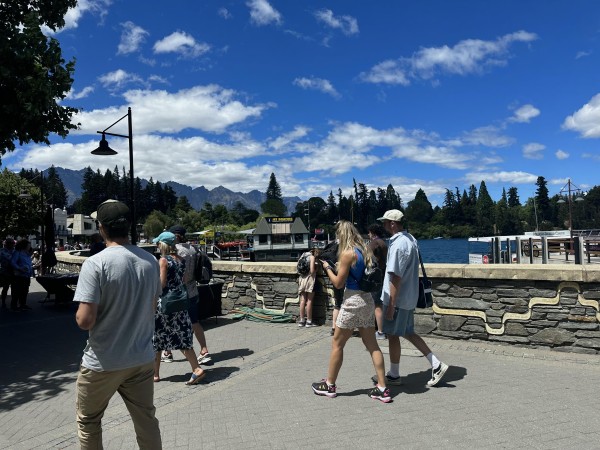
-
Is tourism making the expected and necessary contributions to our local and national economies?
QLDC’s Planning
For years our Council has been inured to the mindset that bigger is better – as in more tourists, more hotels, more profits (much of which is transferred to shareholders outside our region), more population, more residential housing, and more urban sprawl. This focus on numbers comes at the expense of our GDP per capita, our wellbeing, and sustaining the quality of our natural environment.
In addition, the delays due to increasing congestion on our roads is impacting our commerce, our environment from more vehicle emissions, and personal frustrations. It is taking us longer, and sometimes much longer, to get from A to B.
Now we have the serious issue of contaminated water discharging from our sewage treatment facility into the Shotover River.
The facility is unable to treat properly the quantities of sewage arriving at the plant. The contamination has become so critical that QLDC is facing legal action by the Environment Court. Yet QLDC, knowing about this serious problem since 2021 and the limited capacity of the plant, has continued to issue more residential building consents. This means, of course, more sewage at the plant.
On reflection, the treatment facility should never have been located close to where commercial and residential developments were likely to take place and since have taken place.
Central Government is implicated too. Recently the Minister for the Environment approved the fast tracking of 6,000 new residences in the Wakatipu under the Government’s 2024 fast track legislation. The canary was squawking loudly in the proverbial coal mine, but the minister heard nothing.
Need I comment, our infrastructure shortcomings in the Wakatipu have evolved into a real mess. QLDC’s planning and execution are way out of whack. Our community’s satisfaction with QLDC has fallen to a record low. With frustrations continuing to build, how does QLDC intend to sort out the mess, now and in the future? Blaming the Government or the RMA is not good enough.
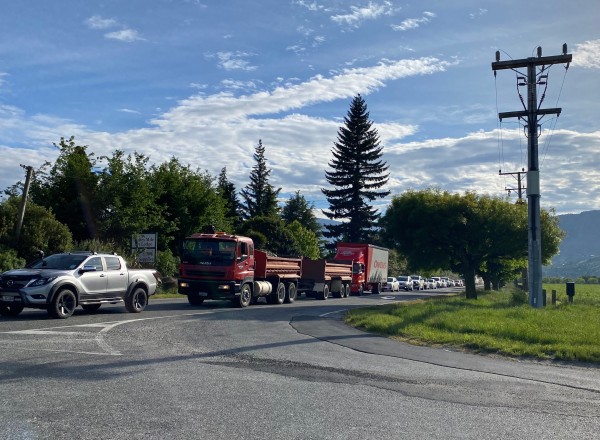
-
Ladies Mile traffic is already frequently grid-locked - with no credible solutions in the pipeline. The Southern Corridor (Jacks Points etc) is facing similar grid lock in the very near future.
Last September QLDC finally adopted a Plan to encourage diversification of the District’s economy. I say “finally” because QLDC’s 2002 report “Tomorrow’s Queenstown” argued for diversifying our economy and for managing the numbers of residents and tourists. Since 2002 all QLDC’s Long Term Plans have included the objective to diversify our economy. It was 2017 that QLDC first appointed an Economic Development Manager. And then it took seven years - to 2024 - for QLDC to produce a diversification plan. QLDC is still not managing the numbers of new residents and tourists.
The 2024 Economic Diversification Plan makes the case for diversification, but it is aspirational rather than providing a road map for QLDC and others to help diversify our economy. Its recommendations begin with words like, study, identify, explore, create, foster, promote, support, etc. The Plan presents, as it should, the District’s values, to provide a framework within which QLDC’s policies and programmes should be prepared and executed and outcomes evaluated.
Until 2021, QLDC had defined our community’s values as: (a) sustainable growth management; (b) quality landscapes and natural environment with enhanced public access; (c) a safe and healthy community that is strong, diverse and inclusive for people of all age groups and incomes; (d) effective and efficient infrastructure that meets the needs of growth; (e) high quality urban environments, respectful of the character of individual communities; (f) a strong and diverse economy; and (g) preservation and celebration of the district’s local cultural heritage. Most of us would agree with these values.
In 2021 QLDC recast the values to be culturally transformative. The community’s values now begin with, “The Economic Diversification Plan flows directly from the Grow Well Whaiora Spatial Plan, which proposes a vision and framework of how and where the district will grow until 2050. The Spatial Plan seeks to make Kāi Tahu more visible and reflect Kāi Tahu values, including sites and areas of wāhi tupuna, and by restoring Kāi Tāhu narratives, including within urban areas.” Kāi Tāhu values also underpin QLDC’s Destination Management Plan 2024.
QLDC’s Spatial Plan, which was approved in July 2021, goes further, informing that some of its key inputs include Kāi Tāhu Values; Ka Huru Manu; A Kāi Tāhu Atlas; Wāhi Tipuna Mapping; and Kāi Tāhu Principles.
Another of the values to be applied to the Spatial Plan is Rakatiratake, which “ensures the Treaty partnership is recognised to enable mana whenua leadership in decision making processes.” While QLDC’s partnerships are to be welcomed, such as its partnering with the Clutha District Council, referring to “partnership” in the context of the Treaty has become highly controversial.
Encouragingly, the Challenges and Opportunities chapter of the Spatial Plan (pp. 44-46) sets out well the negative impacts from the excessive growth of residents and tourists in the Wakatipu and the challenges facing further growth. If only QLDC would walk the talk! What happened to the prior value to ensure effective and efficient infrastructure that meets the needs of growth?
Further, the starting point for preparing the Spatial Plan, was to take as a given - as an exogenous input - the numbers of residents and tourists projected by Stats NZ. Those projections, from 2021, foresaw a nearly doubling of our District’s resident population in 30 years. Specifically, the Plan records a peak of 41,000 residents and 62,000 visitors (103,000) in 2021, and forecasts 78,000 residents and 126,000 visitors (204,000) in 2051. The number of houses is expected to increase from 22,000 to 40,000 over the period. These numbers give us an idea of the challenges facing QLDC in planning for our infrastructure and utilities to cope, and all the while not impacting on the quality of our natural environment.
How much better it would have been if the Spatial Plan had begun with the premise of our community values as an input, as a framework or guardrails, within which future development should take place. The number of residents and tourists we could cope with, while respecting our values, would have become a result or an output from the exercise rather than the other way round.
The Plan would also have informed QLDC that it should no longer put the cart before the horse. QLDC’s business model has been to permit residential and commercial developments, and then oops! - the requisite public infrastructure and utilities like roads and sewage treatment have not been provided for.
QLDC should reflect that it makes total sense to put the horse in front of the cart. Development of the necessary public infrastructure should come first, and only when it is complete, or largely so, should permits be issued to developers to embark on their developments. That’s spatial planning too.
Lastly, QLDC should accept that in the Wakatipu there is no such thing as market-driven affordable housing. Demand is global for a slice of our small alpine paradise. We cannot continue to provide housing and infrastructure for everyone who wants to come and live here. The developers of Lake Hayes Estate, Hanley’s Farm, etc. promoted their developments as resolving the problems of availability and affordability of housing in our area. Try now and buy a house at Lake Hayes Estate for less than $2 million!
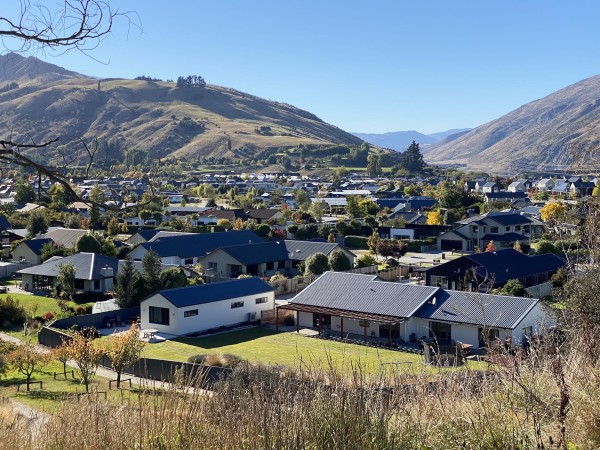
-
Lakes Hayes Estate is now seeing house prices above $2 million
To make housing available and affordable for residents who provide essential services in our community, QLDC should facilitate and secure funding for a major expansion of the Queenstown Lakes Community Housing Trust.
It remains for QLDC to prepare a real road map to speed up the diversification of our economy – setting out who they expect to do what and who will meet the concomitant costs, and how progress will be monitored and accountability assessed.
In the meantime, we have a shining star for diversification with recently established Technology Queenstown (TQ). We should applaud their goal to accelerate the transformation of our budding tech sector into a world-class, high-value tech hub. I would suggest they include in their agenda the establishment of a technology university in the Wakatipu, in collaboration with QLDC, the Government, the Resort College, regional trusts, and other sources of funding.
How progressive it would be for Queenstown and New Zealand if TQ partnered with a top-notch overseas university. How about a partnership with Stanford University? If Singapore can do it, why can’t we? For a start, QLDC should identify 15 or more hectares of contiguous land for development of a university campus, sufficient to cater for a university’s various facilities, and for growth of its student body and activities over the years.
A technology university and TQ would be mutually supportive in transforming Queenstown to become a nexus of high technology, research, and innovation, spawning high-tech businesses and high-paying jobs. It should also help New Zealand overall to become a more resilient and competitive economy.
Not least, a partnership with Stanford University would bolster NZ’s tech relationships with Silicon Valley, which would be a real advantage for NZ as it competes in the new world of Artificial Intelligence (AI).
Some Recommendations:
§ QLDC should cease immediately the issuance of new residential housing consents in areas served by the Shotover sewage treatment facility. The cessation should remain in place until the problems with the facility, including its capacity, are resolved.
§ QLDC should put in place promptly a bed levy for accommodation facilities in the Wakatipu area. Central Government may huff and puff, but with the proven support of the community and QLDC’s imperative to raise additional funds to maintain and expand our public infrastructure they are likely to acquiesce. QLDC should no longer take No for an answer.
§ QLDC should produce within six months a pragmatic plan to diversify our economy, setting out who is going to do what, how the activities should be funded, and milestones to be met.
§ Given the recent momentum for transformation to a knowledge economy (technology, innovation, research, education), QLDC together with Technology Queenstown should promote the establishment of a technology university in the Wakatipu, partnering with a leading overseas university.
§ More generally, QLDC should push back more assertively against central Government’s increasing centralisation of authority at the expense of Councils’ responsibility for planning and executing the affairs of local government.
Read: Ralph’s previous article for Crux - now read over 30,000 times:





